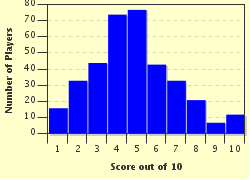Quiz Answer Key and Fun Facts
1. In the late 50's and into the early 60's, "The Flintstones" actually sponsored one brand of cigarettes. Barney, Fred, Wilma, and Betty could be seen smoking at the end of the show. Which brand did they choose?
2. "I Love Lucy" often showed Lucy and Ricky smoking. Lucy and Desi would also do commercials for a certain brand, which aired during the show's intro. This cigarette company made the claim, "Smoke for pleasure today. No cigarette hangover tomorrow." Which brand are they talking about here?
3. School teachers were up in arms when one company claimed ______________ tastes good like a cigarette should. They weren't upset about health issues but about bad grammar. This lead the company to come back with a new ad asking, "What do you want, good grammar or good taste?" Fill in the above blank.
4. Jack Benny had successful radio and televisions shows. One of his sponsors was Lucky Strike. In some of the commercials an auctioneer rambled incomprehensively through a tobacco auction but always ended by clearly saying, "Sold American". Other ads had someone repeatedly saying "LS/MFT", an acronym that Lucky Strike wanted on everyone's lips. LS stands for Lucky Strike. What does MFT represent?
5. There was no bigger celebrity in the heyday of cigarette commercials than John Wayne. In 1952, while filming "Big Jim Mclain", the Duke served up this pitch for his favorite cigarette, "Mild and good tasting pack after pack. And I know, I've been smoking 'em for over twenty years." Which brand had his loyalty?
6. Topper was a popular television show about an aristocratic gentlemen haunted by two ghosts that only he could see. The stars, Leo G. Carroll, Anne Jeffries, and Robert Sterling often followed the show with chatty commercials about their favorite cigarette, Camel. To show the "human" side of their sponsor, Anne Jeffries once informed the audience about which of the following kind gestures instituted by Camel?
7. Eventually, companies wanted to acknowledge customer loyalty rather than celebrity endorsement. One brand, Taryton, started a campaign with their faithful patrons stating, "I'd rather fight than switch." These battle-worn loyalists were shown with cigarette proudly in hand and what on their face?
8. Companies made many claims to make their product sound the best. Which of these was NOT used?
9. Humor was often used to get people to buy. Companies began to focus on the length of the cigarette with Benson and Hedges leading the pack touting the 100mm size in 1967. Their commercials depicted the 'disadvantage' of these long, long, cigarettes showing them bending when you picked up the phone or turned your head in the car and hitting the window. Not to be outdone after the success of this campaign, another company started bragging about their product being 101mm long. Their jingle boasted: "a silly millimeter longer" (to the tune of La Bamba), and soon everyone was humming along. Which brand got the old foot tapping?
10. The very medium that made cigarettes mainstream had to yield to public pressure as the health hazards of this product became more pronounced. Johnny Carson's Tonight Show holds the distinction of airing the very last television commercial for cigarettes on Jan 1, 1971 at 11:59 P.M. Which brand got the honors?
Source: Author
TAKROM
This quiz was reviewed by FunTrivia editor
Beatka before going online.
Any errors found in FunTrivia content are routinely corrected through our feedback system.

